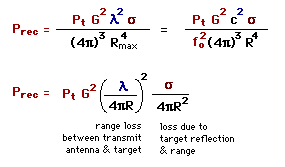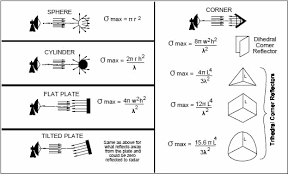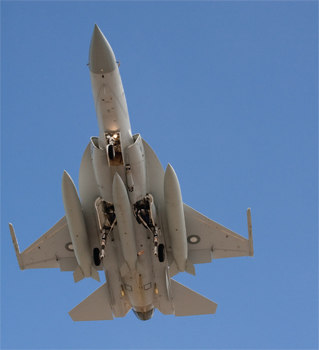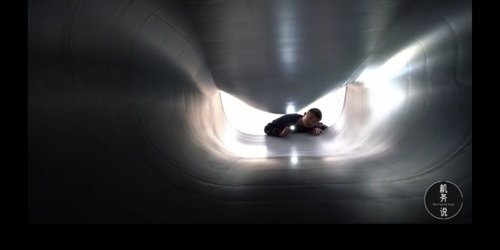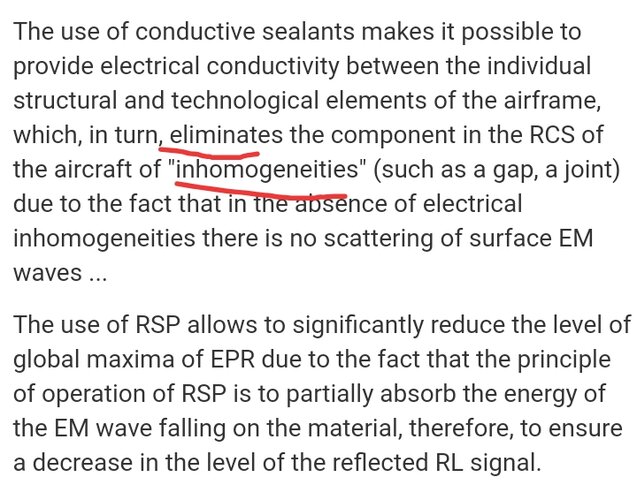Friend ,
Which russians? Propaganda news outlets made to speak good of russian equipment and trash US equipment are *entirely* separated entities from Sukhoi and Academians such as Alexander davydenko which make accurate and reasonable statements in contrast to propaganda sources.
we can make an exact same analogy with western sources and pretty much an enormous amount of western news websites showering us with endless "su57 bad" and "su 57 cancelled" articles , and then say that because those outlets lie , Lockheed must be lying too. again , separate entities.
by the way , being state funded or not has no relation , it still does not eliminate the point that news outlets made to propagate ideas or make money from clickbait are separate from the guys that actually make the plane.
"the russians are lying and boasting" argument is quite a misconception , news agencies can lie , not multi million dollar companies that will have their equipment checked over and over in all kinds of trials by both domestic and foreign countries to actually sign contracts. Lying about military products will just shoot you in the foot. Had there been any scandlas regarding su-35s not being as good as advertised ? or Su-30SM? T-90S tanks being sold like hot cakes? Did the russian MoD care about bad press when they aimed to pick the Felin individual soldier pack instead of russian equipment in the early 2000's?
if an official source directly from the company states something then there are very high chances that its true because they do not have any right to lie, and do not have any gain from lying since its trials and tests that will win the deal and bring money , not the claims.
Of course i am aware of the chances of scandals happening now and then , like literally any company , but its not something sukhoi is particularly famous for , and if someone wants to claim the su57 is worse than advertised , evidence is needed , if not , its a guess.
and that evidence is to be in form of solid concrete data gained from real tests with appropriate equipment.Anything less than that does not qualify as evidence , let alone photograph observations. then at that time we can conclude that they are lying. Apart from that anyone can say any company is lying.
the official requirment is no less than F-22 level because there is a non propaganda source telling so:
View attachment 647335
i dont see any stealth no nos with the su57 , what is considered evidence is not a photograph , RCS testing need an echo chamber , hours upon hours of irradiation , and accurate data from all angles, nothing short of that will ever be evidence
''But how about the gaps that are non aligned ?'' a sealant is Used. ''But all stealth planes use sealants yet they have edged panels !'' except that there is a sealant from another and it all depends on its quality and the level of attenuation ,glazing coatings on the SU57 are twice as absorbant as previous models , there are ten years between the F22 and Su57 , also , note that the edged panels on the su57 are on moving parts , landing gear and weapon bay doors , meanwhile , the straight ones are the ones on non moving parts , hence tighter cavities.That may only need a good enough sealant to hide
Just think about it this way ; Sukhoi knows about the importance of panel serrations , which is why they implemented them , if they did not implement them in other panels then they must have a very good reason for it , the fact that we dont know why doesnt mean they are necessarly wrong. why would they purposely pick certain panels to edge and leave others?
the point that they are doing it to simplify production does not stand. For starters there is no source claiming it , furthermore , can someone calculate the cost saving of using non aligned panels vs using aligned panels and ration that with the signature increase related to it if there is any ? what is the pourcentage of any potential cost incrase related to edging all of the panels , ill have to remind people that if a plane costs 100 million dollars , and edging all of the panels adds an entire million on its own , that is a measly 1 percent cost increase , not something you'd wanna care about if it gives you Rcs drawbacks. and last but not least , it goes in absolute contrast to the su57 patent which purposely state that they are eliminating all of the inhomogenities in the signature , which totally kills the ''panel alignment flaw" argument:
View attachment 647334
It says , literally : eliminate , entirely remove.
literally all of the "flaws" seen on the su 57 follow the same model , weather it be the round IRST or the 101KSO bulbs or others.
they all have the flaw of assuming that hundereds of experts with hundereds of hours of RCS testing data in their hands will make rookie mistakes , which is not conceivable , or assume that they did it on purpose because the requirment is ''semi stealth / watered down stealth / partial stealth" which not only have zero evidence from the company , but also , goes in absolute contradiction with the actual official statement on the matter. Which means that by elimination , they simply found solutions to go around any potential drawbacks of the traditional solutions.(although i can talk about each part , the IRST , Optics , etc , it will result in a very long post)
the logic that states that the su57 is inferior in stealth to things like F-22 / 35 also implies that the F-35 is less stealthy than the F-117. The F35 has many rounded up shapes , such as the back of the engine , the massive cylinder where the gun lays, the countless lumps and bumps on its underside , by any means , the extremely faceted F-117 should be stealthier , but the F-35 actually is stealthier than.





